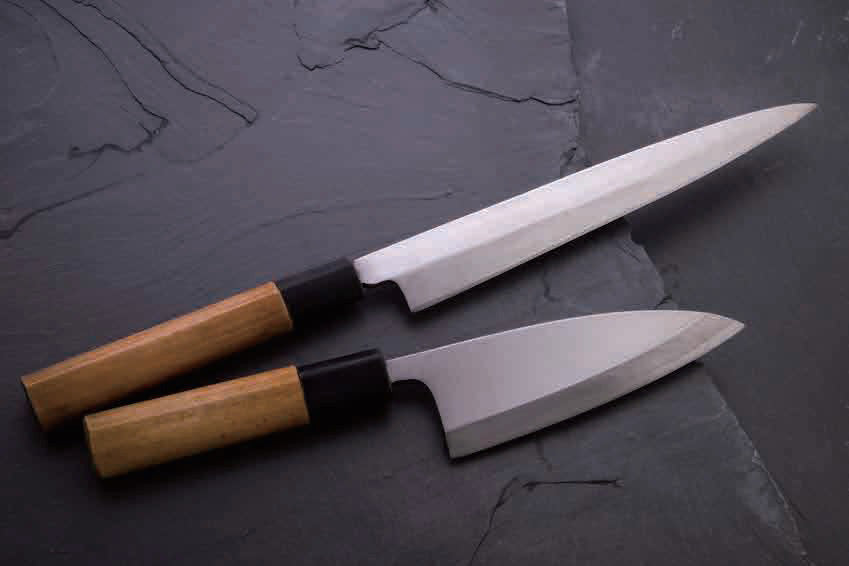Traditional Japanese Kitchenwares — Yanagi-ba

Traditional Japanese Knives - Classifications, Types, and Applicattions 0
Traditional Japanese Knives Classifications
Japanese knives are categorized based upon the materials used and the forgivign technique. (see chart on below)
There are two classifications of materials for traditional Japanese knives.
- Knives made from one material (Honyaki)
- Knives made from two materials (Kasumi)
What is Honyaki Knives?
Honyaki knives are extremely difficult to make. Forgiving techniques of honyaki knives have developed over a long history and only highly skilled Meisters are able to use such techniques. The resulting knives are superior in strength, sharpness, and durability. Maintaining a honyaki knife is also difficult as improper sharpening and cleaning can easily damage it.
What is Kasumi Knives?
Kasumi Knives are easier to make and maintain compared to the honyaki knives. They are made of two materials and are thus softer. Kasumi knives are also relatively inexpensive.
Types and Applications of Japanese Knives
Yanagi-ba

Popular sizes : 240 - 300mm
Applications: The most commonly used knife for preparing sashimi. Other soft to firm foods can also be prepared using the yanagi-ba.
Tako-biki

Popular sizes : 240 - 300mm
Applications: The Tako-biki is more commonly used among the eastern regions of Japan and has the same applications as the Yanagi-eastern.
Fugu-biki

Popular sizes : 240 - 300mm
Applications: Having a thinner blade than the Yanagi-ba, the Fugu-biki is a specialty knife designed for cutting paper-thin slices of the blowfish. Can be used for other applications requiring precise and accurate cutting.
Deba

Popular sizes : 150 - 240mm
Applications: The Deba is an all purpose knife. It can be used to prepare poultry, fish, meat, vegetables, and other types of food.
Kamagata-Usuba (Thin-Bladed)

Popular sizes : 165 - 240mm
Applications: The Kansai version of the Usuba, this knife is more versatile with its pointed tip. t can used for regular cutting as well as for creative cutting of vegetables.
Usuba (Thin-Bladed)

Popular sizes : 165 - 240mm
Applications: The most versatile vegetable knife, the Kanto style Usuba is the most such as sharp-toothed eel.
Hamo Kiri

Popular sizes : 240 - 300mm
Applications: Knives of this type are used for cutting bony fish, such as sharp-toothed eel.
Unagi-Saki (Eel Knife)

Popular sizes : 150 - 240mm
Applications: Knives of this type are used for cutting eel. Different styles are also available depending on the region of Japan (i.e. Osaka, Kyoto, and Nagoya)